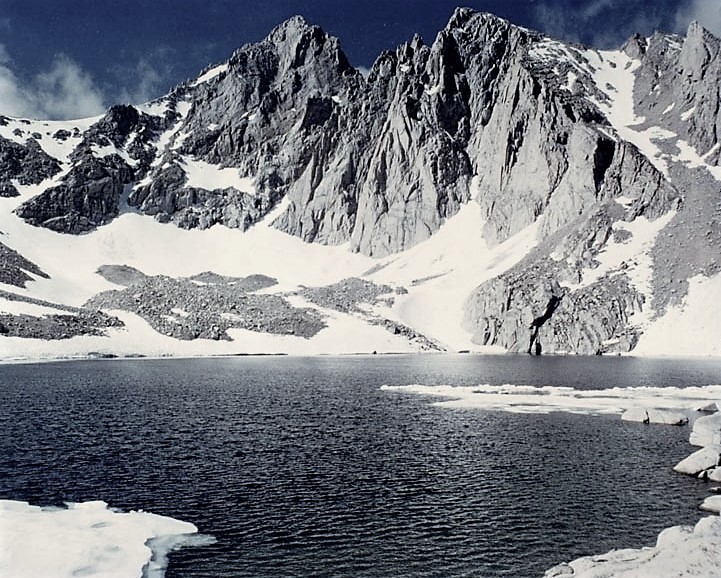In 1982 I led a group of twelve Scouts and three other adult leaders on an unforgettable fifty-mile backpacking trip. It culminated in a climb to the top of Mt. Whitney. At 14,508 feet, it is the highest peak in the lower 48 states. For several reasons, it turned out to be one of the most emotionally and physically taxing experiences of my life. But, surprisingly, it was also one of the most spiritual.
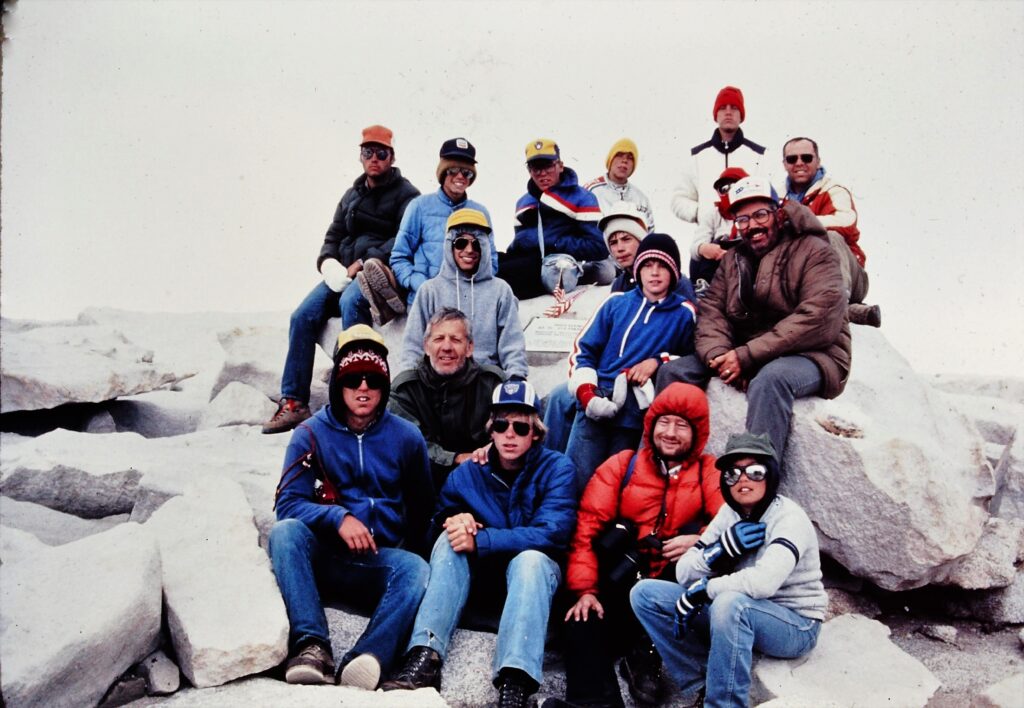
Part of the spiritual dimension was seeing the hand of the Lord multiple times. He helped us overcome obstacles related to the altitude, the weather, our vehicle, and the condition of some of the hikers.
But part of the spiritual aspect was simply being in a place of remarkable peace and majesty. There we could reflect on the goodness of our Creator. We could feel His love for us in providing such natural beauty. And far from civilization, we could better appreciate why prophets and poets throughout the ages have gone into the mountains and wilderness rather than into the city to commune with God.
EDEN
The scriptures tell us that the entire earth was initially a place of beauty and order. At the end of creation, “God saw every thing that he had made, and, behold, it was very good.” (Genesis 1:30.) He then “planted a garden, eastward in Eden,” which was evidently even more lovely than the rest of the earth. Abraham’s record tells us: “Out of the ground made the Gods to grow every tree that is pleasant to the sight and good for food….” Furthermore, “There was a river running out of Eden, to water the garden, and from thence it was parted and became into four heads.” (Abraham 5:8-10.)

Though Adam and Eve were subsequently expelled from the garden into a world of “thorns and thistles” (Genesis 3:18), God never intended that condition to be either permanent or all-pervasive. It was necessary for mankind to have a knowledge of good and evil and experience opposition as part of God’s plan for their growth and eventual perfection. Without experiencing misery, they could never know joy. (2 Nephi 2:23.) But even in a fallen world, there was to be both ugliness and beauty, so that men could choose between them.
God has promised that when His purposes for His children on this planet have been fulfilled, He will restore the earth to its Edenic state. As Isaiah promised: “The Lord shall comfort Zion: he will comfort all her waste places; and he will make her wilderness like Eden, and her desert like the garden of the Lord.” (Isaiah 51:3.) But in the meantime, even in a fallen world, the Lord has made available places of tranquility and loveliness. There those who seek Him can more readily feel His presence. In the balance of this post we will review some of the most prominent recorded examples of those who have done so.
GOD REPEATEDLY SPOKE TO MOSES IN THE MOUNTAINS
The scriptures speak of at least five occasions on which the prophet Moses encountered God in a mountainous environment. The first was when Moses was caring for the flock of his father-in-law Jethro. He “led the flock to the backside of the desert, and came to the mountain of God, even to Horeb.” (Exodus 3:1.) There “the angel of the Lord appeared unto him in a flame of fire out the midst of a bush,” which was not consumed. God then spoke personally to Moses out of the bush and called him to lead His people out of bondage.
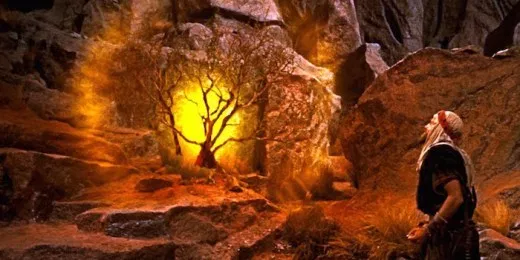
Once the Israelites were led out of Egypt, Moses twice ascended Mt. Sinai. There he received tablets of stone engraved by God Himself with the law by which ancient Israel was to live. No doubt it was easier to hear God’s voice away from the chaos of the encampment below.
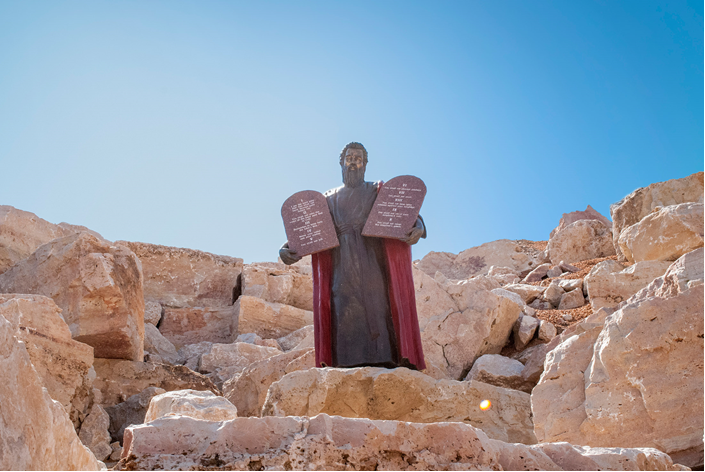
Then there was the time when Moses “was caught up into an exceedingly high mountain.” (Moses 1:1.) Evidently this time he didn’t have to climb but was carried up by the Lord Himself. There God taught Moses details of the creation of the earth, which form the basis for the opening chapters of Genesis.
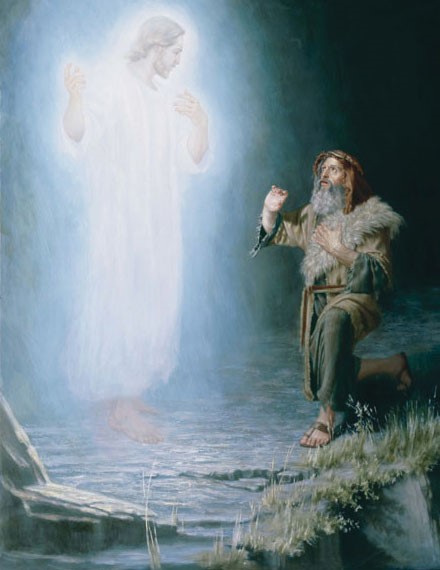
Finally, from the top of Mt. Nebo, the Lord showed Moses the promised land which he was permitted to see but not enter. (Deuteronomy 34:1.) Just as Moses could see the entire land of Israel more readily from a mountain top, so can we often “see” more clearly in quiet places, away from the noise and distractions of everyday life.
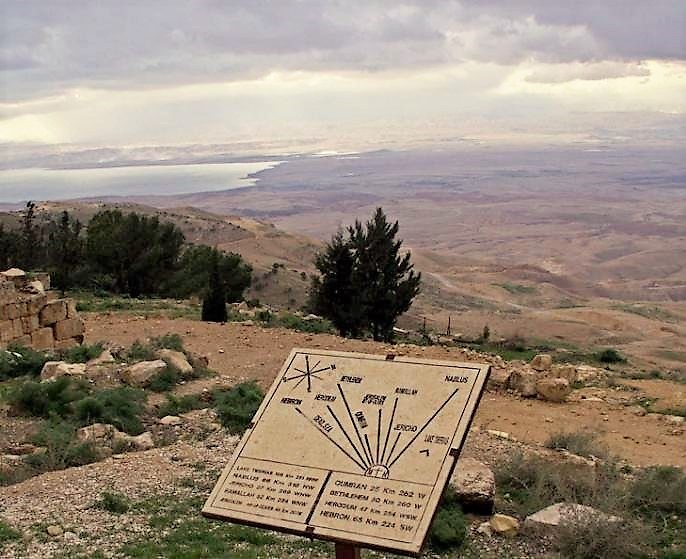
ELIJAH’S CONTEST WITH THE PRIESTS OF BAAL OCCURRED ON A MOUNTAIN
The prophet Elijah similarly had two of his greatest experiences on mountain tops. His famed contest with the priests of Baal took place on mount Carmel. There God sent down fire from heaven to prove His superiority over the impotent heathen gods. (1 Kings 18:19ff.)

Later, Elijah found it necessary to flee for his life before the forces of king Ahab and his wife Jezebel. He became so despondent that he was almost suicidal. But encouraged and nourished by an angel during his flight, he eventually made it to “Horeb, the mount of God.” (1 Kings 19:8.) After taking refuge in a cave in the mountain, the Lord told him to climb to the summit. There Elijah had an oft-cited encounter with the Lord. “And, behold, the LORD passed by, and a great and strong wind rent the mountains, and brake in pieces the rocks before the LORD; but the LORD was not in the wind: and after the wind an earthquake; but the LORD was not in the earthquake: And after the earthquake a fire; but the LORD was not in the fire: and after the fire a still small voice. (1 Kings 19:11‑12.) Many since Elijah’s time have also found it easier to hear that same “still small voice” in natural settings away from competing voices.
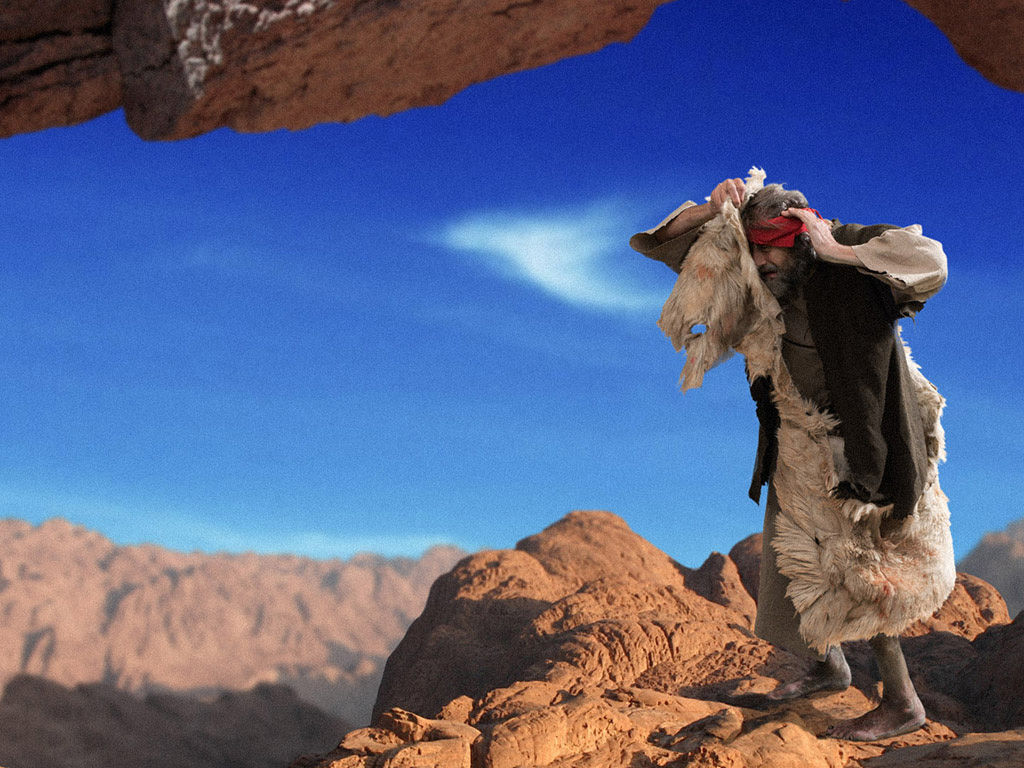
EZEKIEL WAS TAKEN IN VISION INTO A HIGH MOUNTAIN
Following the Babylonian captivity, the prophet Elijah recorded his own encounter with God on a mountain top. He wrote: “In the visions of God brought he me into the land of Israel, and set me upon a very high mountain, by which was as the frame of a city on the south.” (Ezekiel 40:2.) There the Lord showed him the future temple and its latter-day glory in sufficient detail to occupy five chapters.
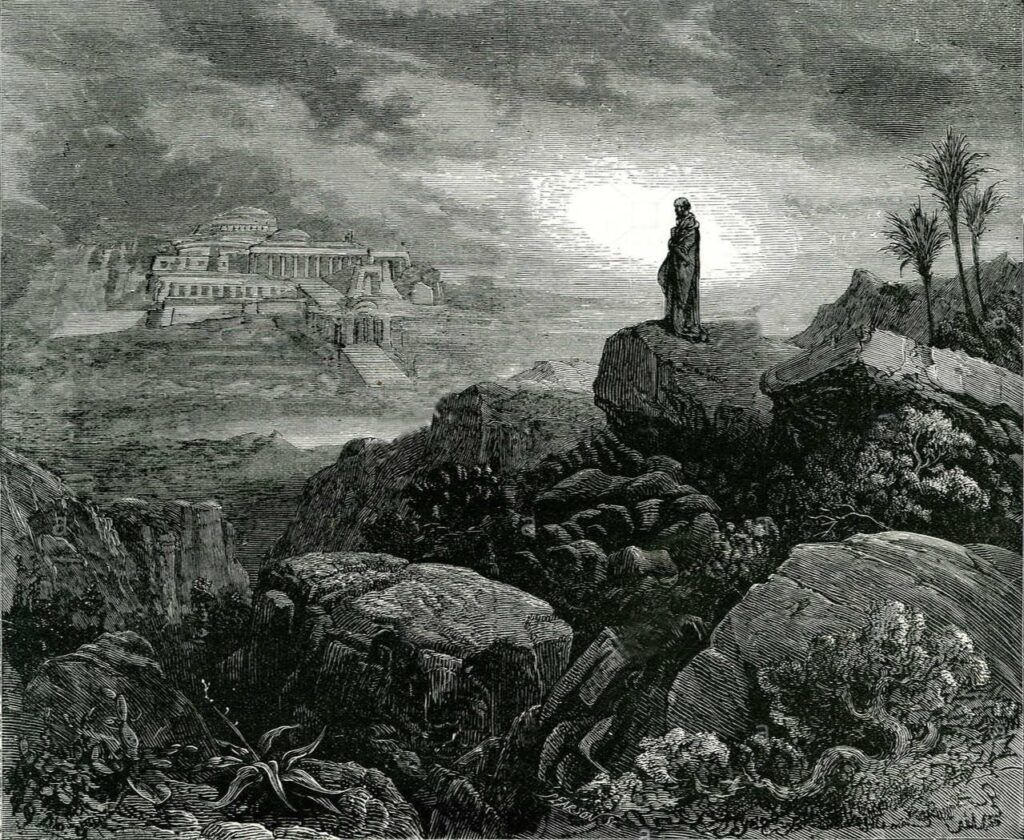
THE KINGDOM OF GOD IN THE LATTER DAYS WAS SEEN AS ORIGINATING IN THE MOUNTAINS.
Given the historic relationship between mountains and inspiration, perhaps it is fitting that Daniel foresaw that the latter-day kingdom of God would originate in the mountains. As he interpreted the dream of king Nebuchadnezzar, he told the Babylonian king that in the latter days God Himself would set up a kingdom. That kingdom was represented as “stone … cut out of the mountain without hands,” which would grow increasingly larger and eventually replace all earthly kingdoms. (Daniel 2:44-45.)

JESUS WENT INTO THE WILDERNESS AFTER HIS BAPTISM TO COMMUNE WITH GOD
Many of the notable events in the life of Jesus Christ were also associated with mountains, gardens, or wilderness areas. The first was immediately following His baptism, when He was “led up of the Spirit into the wilderness to be with God.” (Matthew 4:1, Joseph Smith Translation.) Traditional translations give the mistaken impression that Jesus went into the wilderness to be tempted of the devil. Certainly, Satan took advantage of the Savior’s weakened state after forty days of fasting to try to tempt Him. But that was clearly not Jesus’ purpose in going into the wilderness in the first place. He knew that in that isolated (if not physically beautiful setting) He could better communicate with His Father in Heaven and prepare Himself for His ministry ahead.
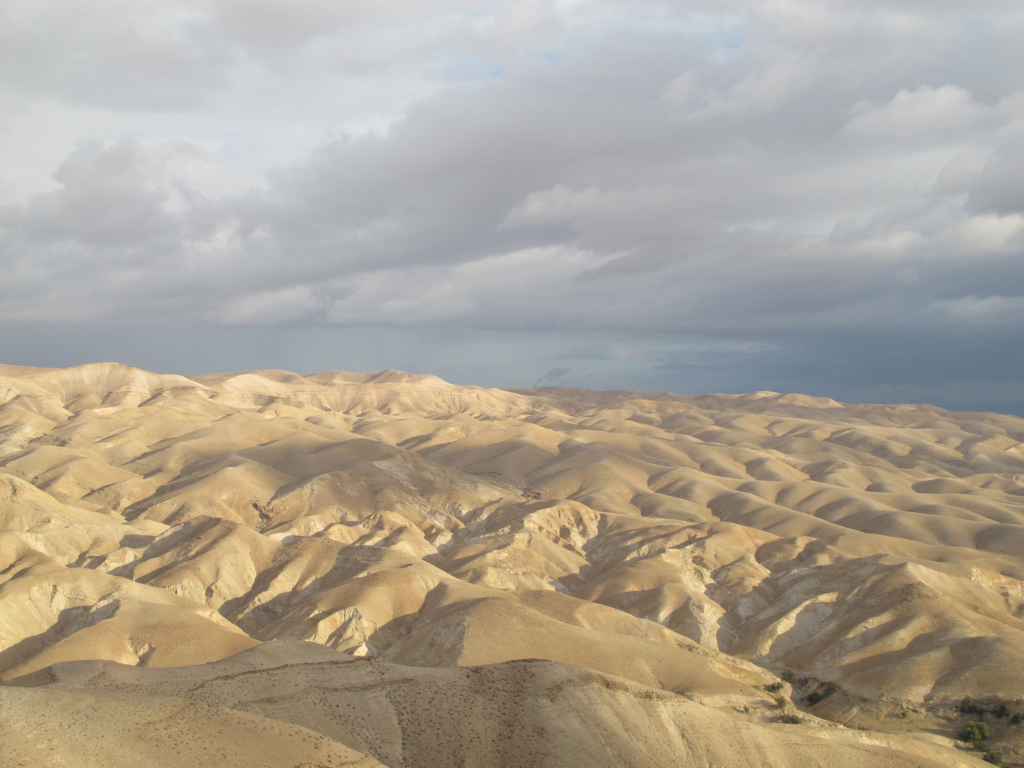
DURING HIS MINISTRY JESUS OFTEN WENT INTO THE MOUNTAINS TO PRAY AND TO ESCAPE FROM THE MULTITUDES
Prior to calling His twelve apostles, Jesus “went out into a mountain to pray, and continued all night in prayer to God.” The Savior thereby taught that momentous decisions are often better made after prayer and meditation in an atmosphere of serenity. (Luke 6:12.)
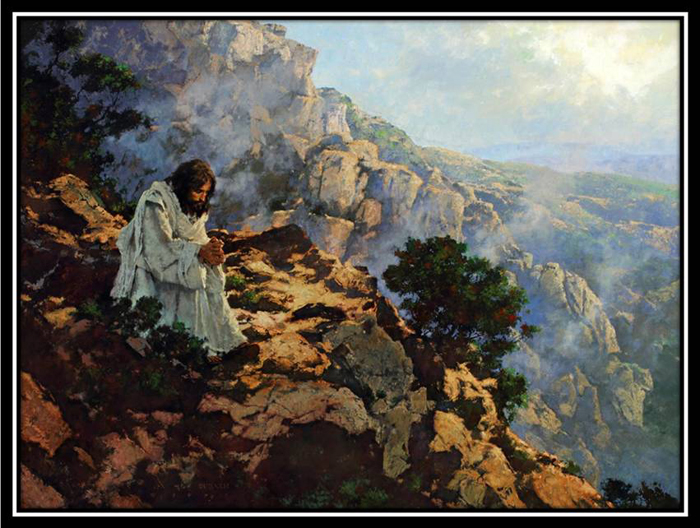
While Jesus came to teach and serve, there were times even He needed to escape and seek physical and spiritual renewal. Matthew 14:23 tells us: “When he had sent the multitudes away, he went up into a mountain apart to pray: and when the evening was come, he was there alone.” He did the same after His feeding of the five thousand. John’s record tells us: “When Jesus therefore perceived that they would come and take him by force, to make him a king, he departed again into a mountain himself alone.” (John 6:15)
SOME OF JESUS’ BEST KNOWN TEACHINGS WERE GIVEN ON “MOUNTS”

The Sermon on the Mount may be the most famous discourse of all time. But it probably didn’t look like the artistic rendition above, with multitudes of men, women, and children listening to what most consider a wonderful but utterly impractical sermon. After all, what would happen if everyone took literally the injunction to take no thought for what they were to eat or wear? And can people really be expected to love their enemies?
But a closer reading suggests a more limited audience further from population: “And seeing the multitudes, he went up into a mountain: and when he was set, his disciples came unto him: And he opened his mouth, and taught them.” (Matthew 5:1-2) In other words, Jesus was evidently looking for an opportunity to give specialized leadership training to his Twelve Apostles and perhaps others of similar stature. That would have been difficult to do with thousands of others milling around. So, seeing the multitudes, He didn’t go toward them—He went in the opposite direction, up a mountain, where he and his invited leaders could have a measure of solitude. He invited them, not the masses, to dedicate their entire attention to the ministry. And they, having been baptized and being entitled to the gift of the Holy Ghost, could be expected to live on a higher spiritual plane than those who had not yet qualified for that additional divine help.
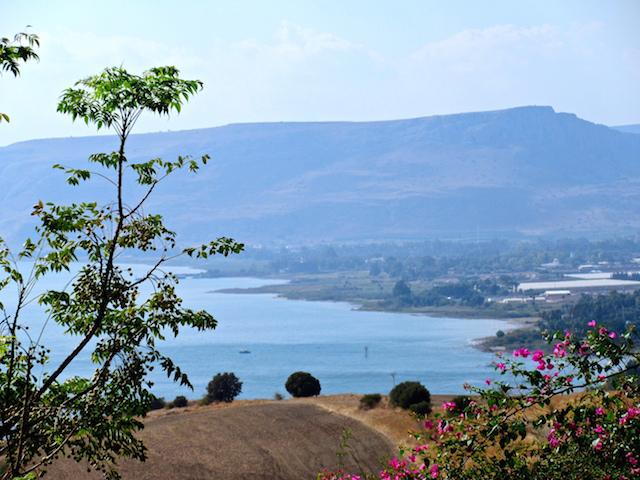
The Mount of Olives, on the east side of Jerusalem, was another favorite spot during the Savior’s ministry. While not particularly high or remote, it was certainly more so than the streets of Jerusalem. It afforded a quiet vantage point from which to see the city and instruct His disciples. Matthew 24:3, for example, tells us: “As he sat upon the mount of Olives, the disciples came unto him privately, saying, Tell us, when shall these things be? and what shall be the sign of thy coming, and of the end of the world?” In response, the Savior gave one of his most famous reviews of future events, including those leading up to His Second Coming.
JESUS CHOSE A MOUNTAIN AS THE SCENE FOR THE TRANSFIGURATION
One of the most sacred events in Jesus’ mortal life occurred when shortly before His death He took Peter, James and John “into an high mountain apart” and was transfigured before them. (Matthew 17:1.)
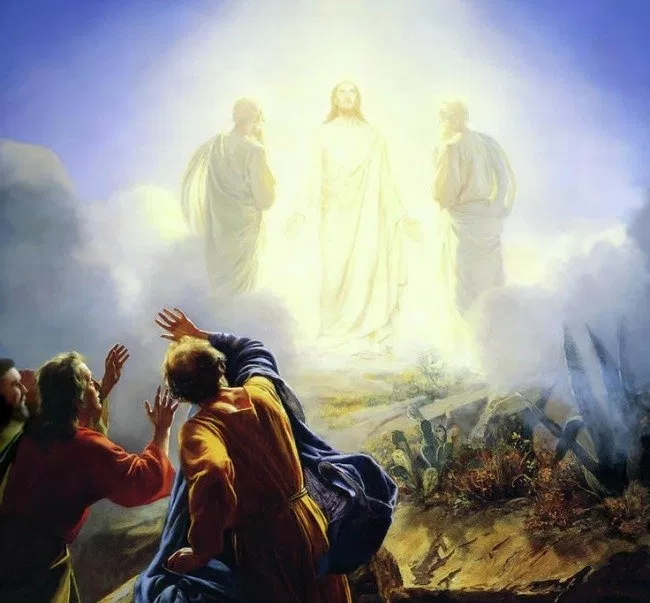
Both Moses and Elijah, who had had such great experiences themselves on mountain tops, visited to confer special priesthood keys on Jesus’ apostles and go instruct them concerning their future mission. Scholars are not agreed as to whether the site was Mount Tabor, which was more accessible, or the more stately but more remote Mount Hermon. But it was likely one of the two.
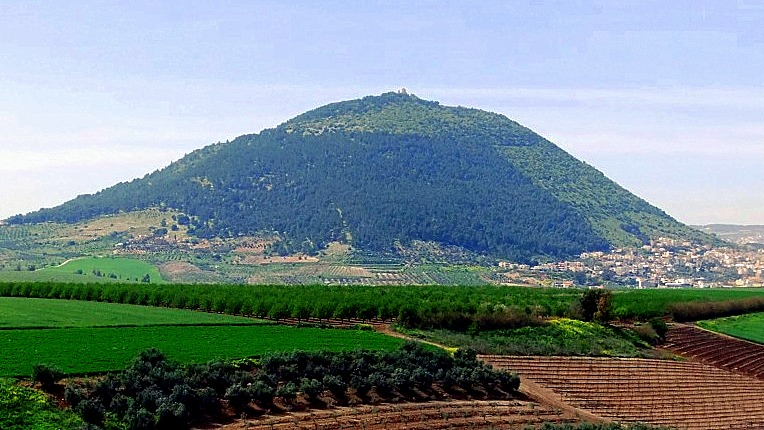
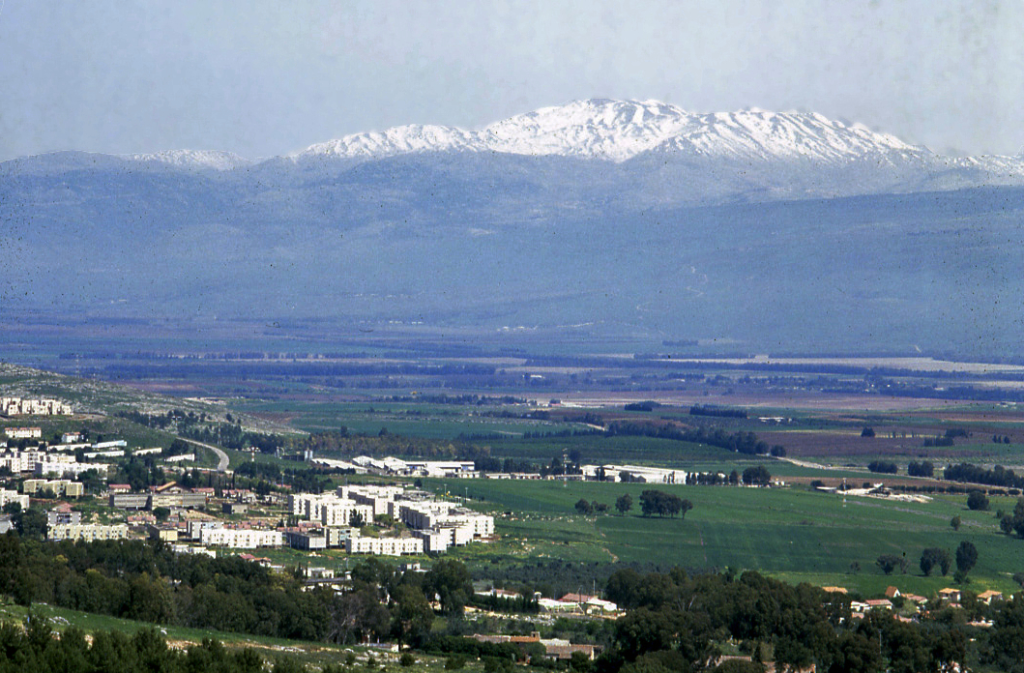
JESUS ENACTED THE CENTRAL DRAMA OF THE ATONEMENT ALONE IN A GARDEN
“When Jesus had spoken these words, he went forth with his disciples over the brook Cedron, where was a garden, into the which he entered, and his disciples.” (John 18:1). There He separated Himself from His apostles and prayed. And in some way beyond our finite comprehension, Jesus was permitted to suffer the equivalent of all the pain, sorrow, and misery experienced or caused by all of mankind since the beginning of time.
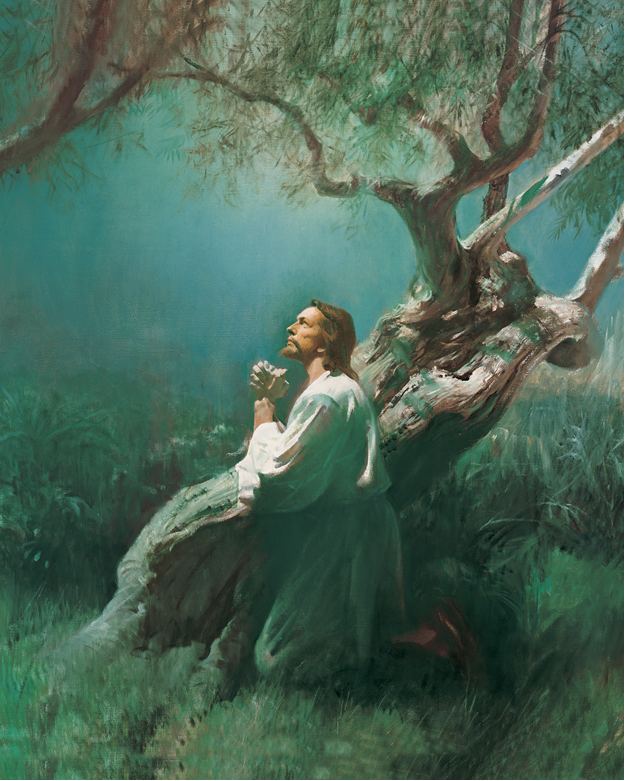
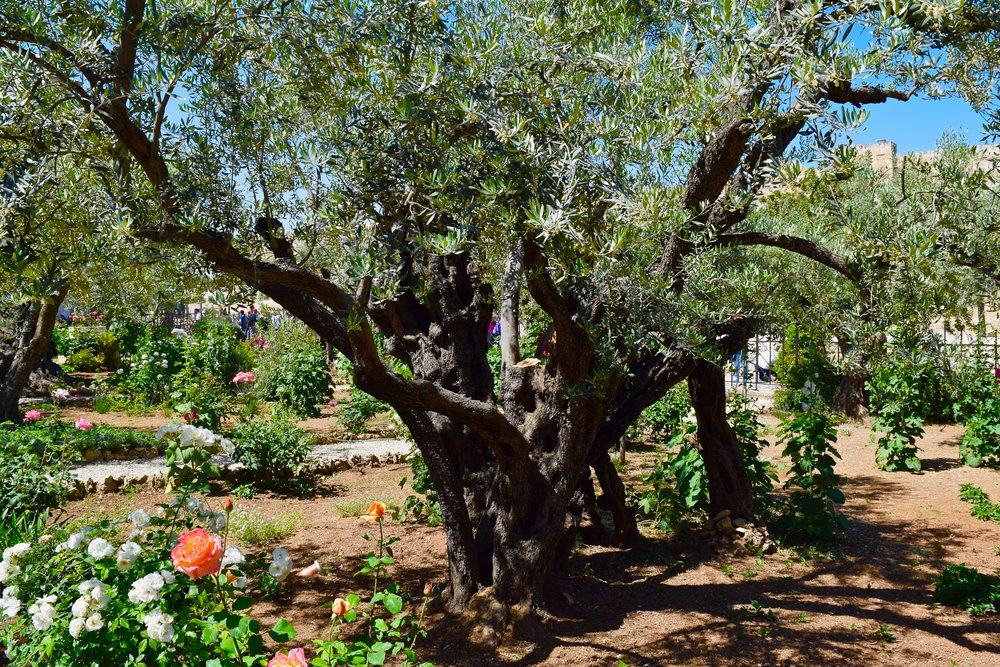
CHRIST WAS BURIED (AND RESURRECTED) IN A GARDEN PLACE
Following Christ’s crucifixion, His body was laid in a sepulcher in a garden. (John 19:41.) The resurrection, of course, took place in the same garden. Scholars disagree as to the site. But the atmosphere at the Garden Tomb, shown below, is certainly more like what the setting must have been like than that found today at Church of the Holy Sepulcher, which our Catholic friends generally revere as the site of His burial and resurrection.

JESUS APPEARED TO HIS APOSTLES AFTER HIS RESURRECTION IN A PREVIOUSLY APPOINTED MOUNTAIN SETTING
“Then the eleven disciples went away into Galilee, into a mountain where Jesus had appointed them.” (Matthew 28:16)
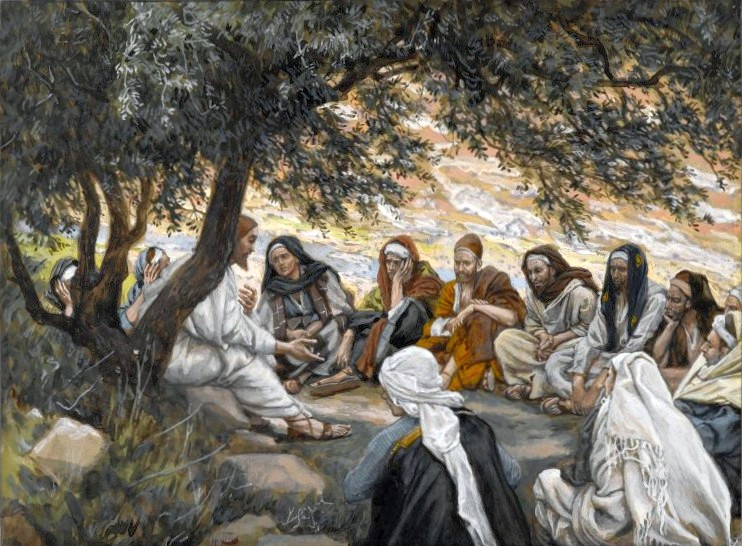
JESUS ASCENDED INTO HEAVEN FROM A MOUNTAIN
And when he had spoken these things, while they beheld, he was taken up; and a cloud received him out of their sight.
And while they looked stedfastly toward heaven as he went up, behold, two men stood by them in white apparel;
Which also said, Ye men of Galilee, why stand ye gazing up into heaven? this same Jesus, which is taken up from you into heaven, shall so come in like manner as ye have seen him go into heaven.
Then returned they unto Jerusalem from the mount called Olivet, which is from Jerusalem a sabbath day’s journey. (Acts 1:9‑12)
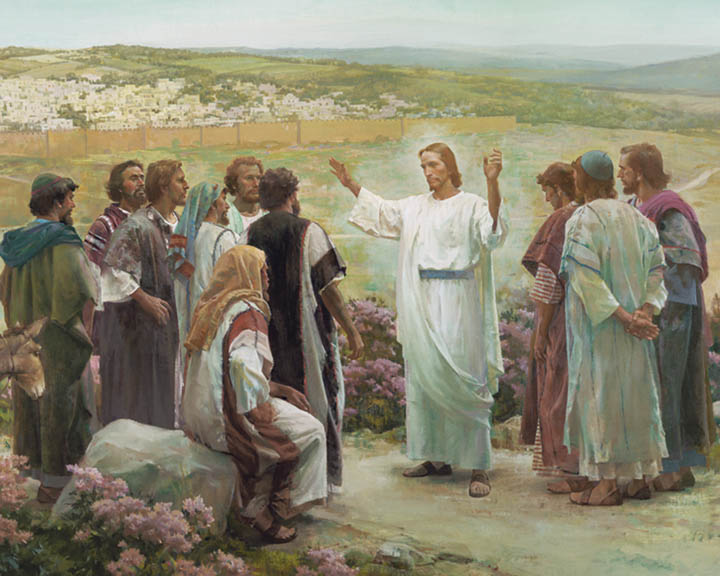
THE SECOND COMING IS PROPHECIED TO OCCUR ON THE SAME MOUNTAIN
And his feet shall stand in that day upon the mount of Olives, which is before Jerusalem on the east, and the mount of Olives shall cleave in the midst thereof toward the east and toward the west, and there shall be a very great valley; and half of the mountain shall remove toward the north, and half of it toward the south. (Zechariah 14:4)
NEPHI WAS CAUGHT AWAY IN VISION INTO A HIGH MOUNTAIN
Book of Mormon prophets also found mountains and wilderness to be conducive to communication with God. After listening to his father’s account of his vision of the tree of life, Nephi wanted the same experience. He wrote:
For it came to pass after I had desired to know the things that my father had seen, and believing that the Lord was able to make them known unto me, as I sat pondering in mine heart I was caught away in the Spirit of the Lord, yea, into an exceedingly high mountain, which I never had before seen, and upon which I never had before set my foot. (1 Nephi 11:1)
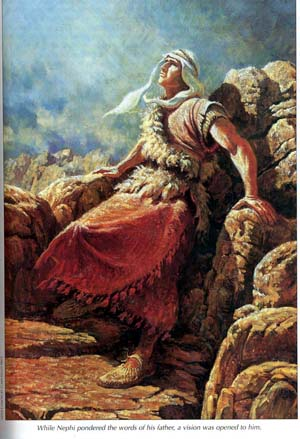
NEPHI CLIMBED A MOUNTAIN IN THE LAND BOUNTIFUL TO PRAY
Nephi recorded:
7 And it came to pass that after I, Nephi, had been in the land of Bountiful for the space of many days, the voice of the Lord came unto me, saying: Arise, and get thee into the mountain. And it came to pass that I arose and went up into the mountain, and cried unto the Lord. (1 Nephi 17:7)
There the Lord spoke with him and gave him directions for building a ship. The same mountain evidently became a place Nephi visited often to seek further direction. He tells us: “I, Nephi, did go into the mount oft, and I did pray oft unto the Lord; wherefore the Lord showed unto me great things.” (1 Nephi 18:3.) The word “wherefore” may simply be Nephi’s attributing his revelations to his having prayed. But he could well be telling us that the setting had something to do with it as well.
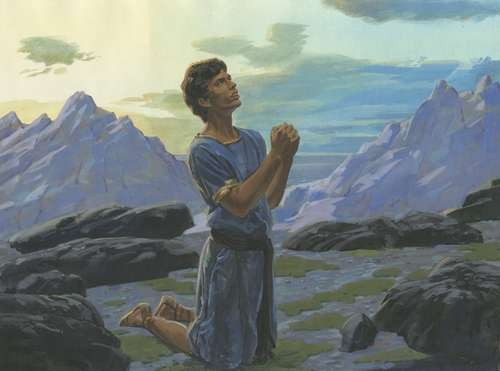

ENOS’ CONVERSION TOOK PLACE IN THE FORESTS
Nephi’s nephew, Enos, didn’t go into the forest looking to commune with God. He simply went hunting. But there was apparently something about the serenity and beauty of the setting which moved him to deep reflection. He finally knelt in prolonged, fervent prayer, with dramatic results. In his words:
Behold, I went to hunt beasts in the forests; and the words which I had often heard my father speak concerning eternal life, and the joy of the saints, sunk deep into my heart. And my soul hungered; and I kneeled down before my Maker, and I cried unto him in mighty prayer and supplication for mine own soul; and all the day long did I cry unto him; yea, and when the night came I did still raise my voice high that it reached the heavens. And there came a voice unto me, saying: Enos, thy sins are forgiven thee, and thou shalt be blessed. And I, Enos, knew that God could not lie; wherefore, my guilt was swept away.
(Enos 1:3)
Enos had listened to his father and uncle preach for years. He wasn’t rebellious but was evidently a bit apathetic. The turning point wasn’t listening to a more powerful sermon. It was being alone in a quiet natural environment that finally made it possible for Enos to experience personally the divine communication he had only heard about up to that point.

ALMA TAUGHT AND BAPTIZED CONVERTS IN A BEAUTIFUL FOREST AREA NEAR THE WATERS OF MORMON
Admittedly, Alma’s initial reason for fleeing to the isolated area known as Mormon was to escape from the wrath of King Noah. But it also provided an ideal setting for the spiritual experiences which ensued, as a couple of hundred interested followers joined with him, listened to him teach, and accepted baptism at his hands. The Book of Mormon tells us:
And now it came to pass that all this was done in Mormon, yea, by the waters of Mormon, in the forest that was near the waters of Mormon; yea, the place of Mormon, the waters of Mormon, the forest of Mormon, how beautiful are they to the eyes of them who there came to the knowledge of their Redeemer; yea, and how blessed are they, for they shall sing to his praise forever. (Mosiah 18:30)
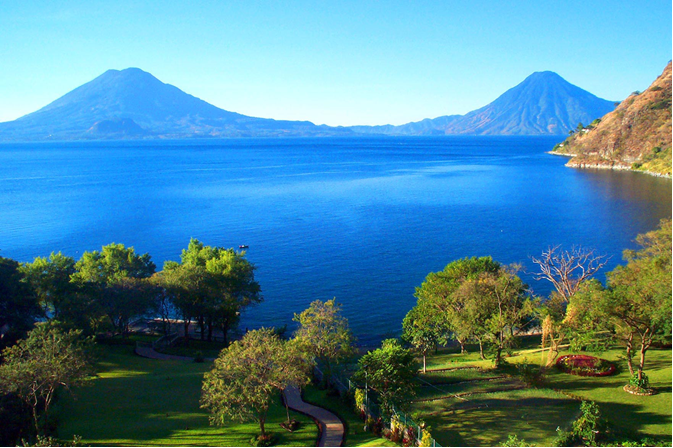
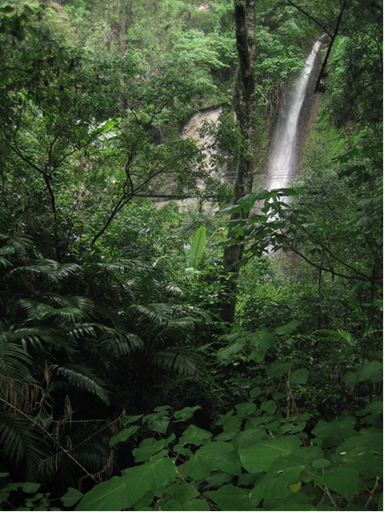
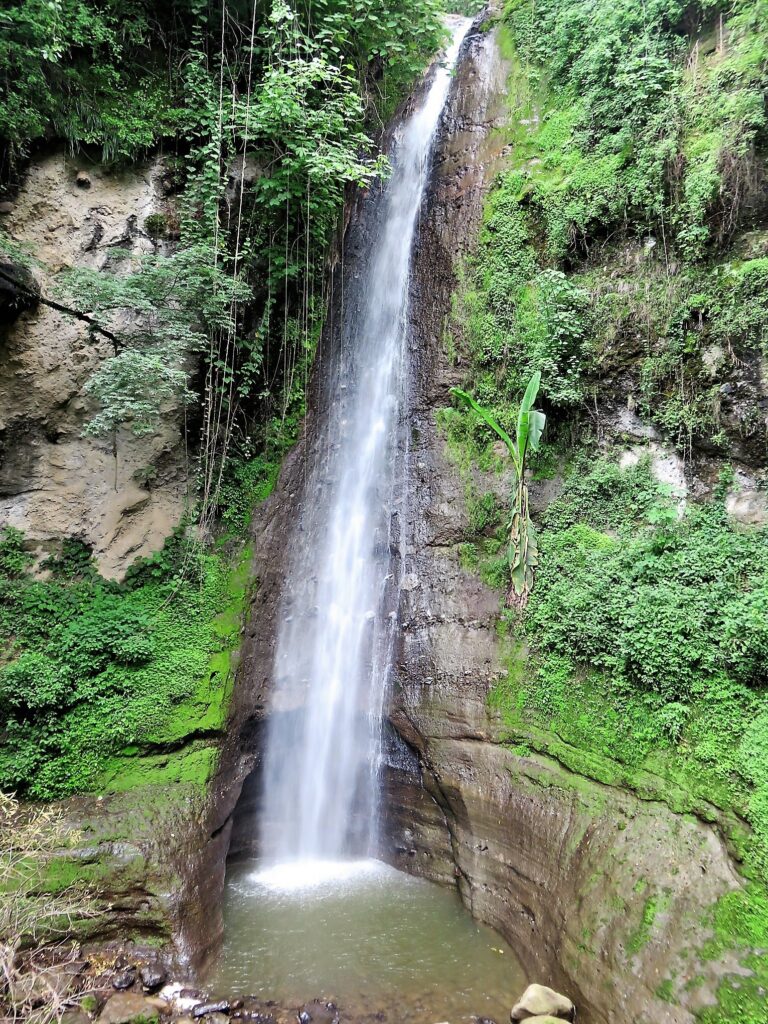
THE FIRST VISION OF JOSEPH SMITH TOOK PLACE IN A SECLUDED GROVE
The first vision of the latter-day prophet Joseph Smith came in a similar setting. He had spent many months in prolonged investigation of the religions of his day, pondering which of them could be right. But he got his answer when he went alone into the woods near his home, on a beautiful spring morning. (J Smith‑History 1:14‑15)

A SCHOOL OF ELDERS UNDER THE DIRECTION OF PARLEY P. PRATT HAD GREAT SPIRITUAL EXPERIENCES IN AN OUTDOOR CLASS.
A school of Elders was also organized, over which I was called to preside. This class, to the number of about sixty, met for instruction once a week. The place of meeting was in the open air, under some tall trees, in a retired place in the wilderness, where we prayed, preached and prophesied, and exercised ourselves in the gifts of the Holy Spirit. Here great blessings were poured out, and many great and marvelous things were manifested and taught. The Lord gave me great wisdom, and enabled me to teach and edify the Elders, and comfort and encourage them in their preparations for the great work which lay before us. I was also much edified and strengthened. To attend this school I had to travel on foot, and sometimes with bare feet at that, about six miles. This I did once a week, besides visiting and preaching in five or six branches a week. (Autobiography of Parley P. Pratt, pp. 93-94.)
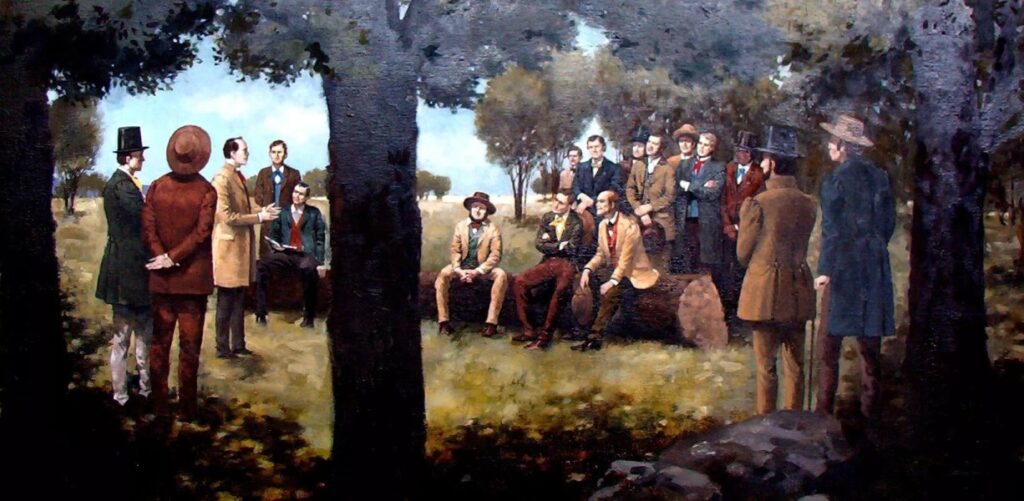
MOUNTAINS AND GARDENS HAVE BEEN A SYMBOL OF TEMPLES AND ACCESS TO GOD THROUGHOUT THE AGES
Representative passages include:
Great is the LORD, and greatly to be praised in the city of our God, in the mountain of his holiness. (Psalms 48:1)
And it shall come to pass in the last days, that the mountain of the LORD’s house shall be established in the top of the mountains, and shall be exalted above the hills; and all nations shall flow unto it.
And many people shall go and say, Come ye, and let us go up to the mountain of the LORD, to the house of the God of Jacob; and he will teach us of his ways, and we will walk in his paths: for out of Zion shall go forth the law, and the word of the LORD from Jerusalem. (Isaiah 2:2-3)
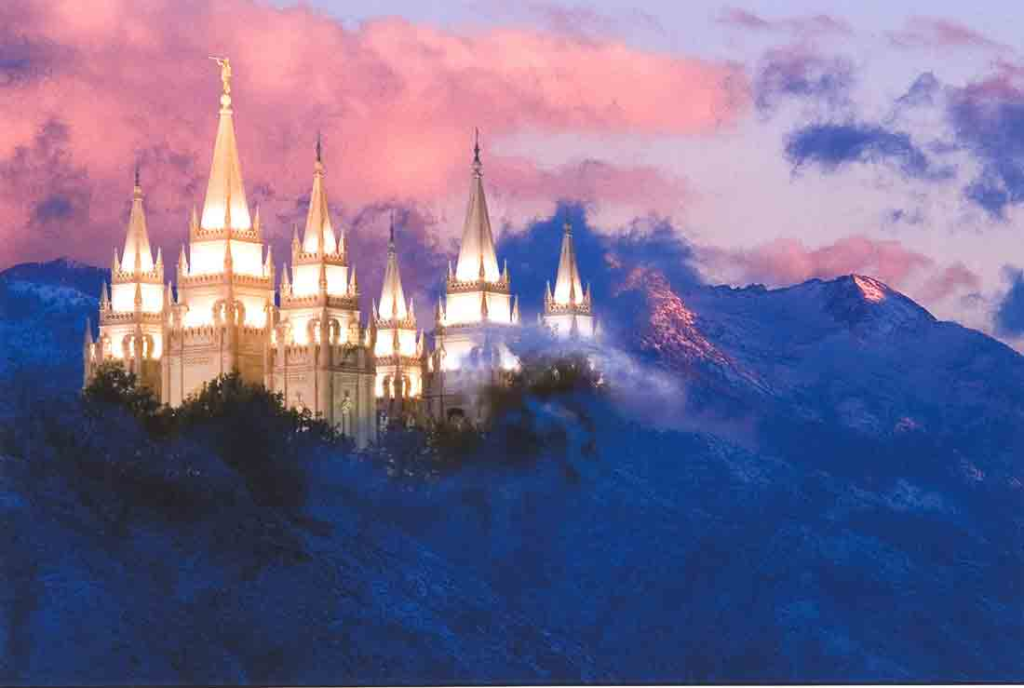
O Zion, that bringest good tidings, get thee up into the high mountain; O Jerusalem, that bringest good tidings, lift up thy voice with strength; lift it up, be not afraid; say unto the cities of Judah, Behold your God! (Isaiah 40:9)
How beautiful upon the mountains are the feet of him that bringeth good tidings, that publisheth peace; that bringeth good tidings of good, that publisheth salvation; that saith unto Zion, Thy God reigneth! (Isaiah 52:7)
The wolf and the lamb shall feed together, and the lion shall eat straw like the bullock: and dust shall be the serpent’s meat. They shall not hurt nor destroy in all my holy mountain, saith the LORD. (Isaiah 65:25)
Who shall ascend into the hill of the LORD? or who shall stand in his holy place?
He that hath clean hands, and a pure heart; who hath not lifted up his soul unto vanity, nor sworn deceitfully. (Psalms 24:3‑4)
For the LORD shall comfort Zion: he will comfort all her waste places; and he will make her wilderness like Eden, and her desert like the garden of the LORD; joy and gladness shall be found therein, thanksgiving, and the voice of melody. (Isaiah 51:3)
POETS, PHILOSOPHERS, AND RELIGIOUS LEADERS HAVE TAUGHT OF THE SPIRITUAL COMMUNION WHICH MORE EASILY OCCURS ON MOUNTAINS OR IN WILDERNESS
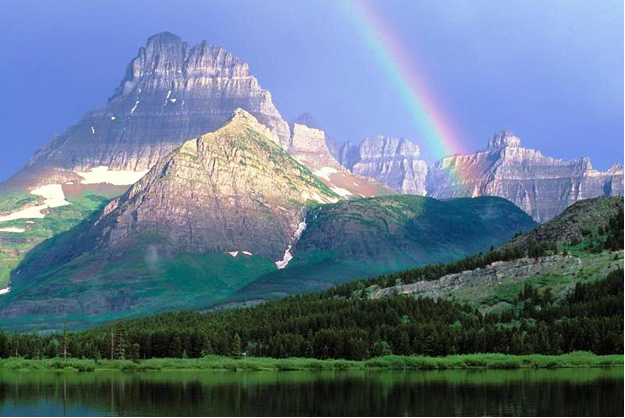
William Wordsworth:
“One impulse from a vernal wood
May teach you more of man,
Of moral evil and of good,
Than all the sages can.”
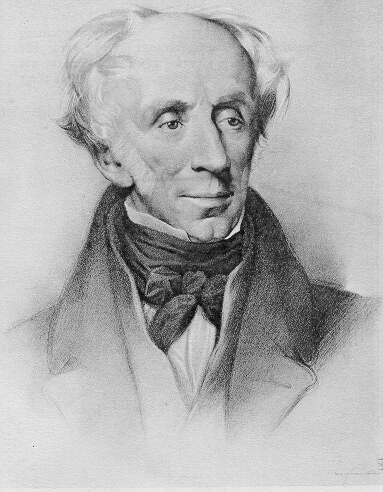
Sterling W. Sill:
Through a proper appreciation of the beauty of nature, we may put ourselves in tune with the infinite.
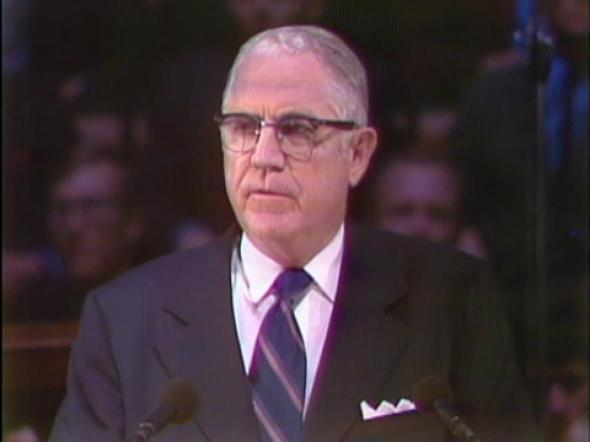
Carl Boberg, translated by Stuart K. Hine, How Great Thou Art, verses 1 & 2:
O Lord my God, When I in awesome wonder,
Consider all the worlds Thy Hands have made;
I see the stars, I hear the rolling thunder,
Thy power throughout the universe displayed.
Then sings my soul, My Saviour God, to Thee,
How great Thou art, How great Thou art.
Then sings my soul, My Saviour God, to Thee,
How great Thou art, How great Thou art!
When through the woods, and forest glades I wander,
And hear the birds sing sweetly in the trees.
When I look down, from lofty mountain grandeur
And see the brook, and feel the gentle breeze.
Then sings my soul, My Saviour God, to Thee,
How great Thou art, How great Thou art.
Then sings my soul, My Saviour God, to Thee,
How great Thou art, How great Thou art!
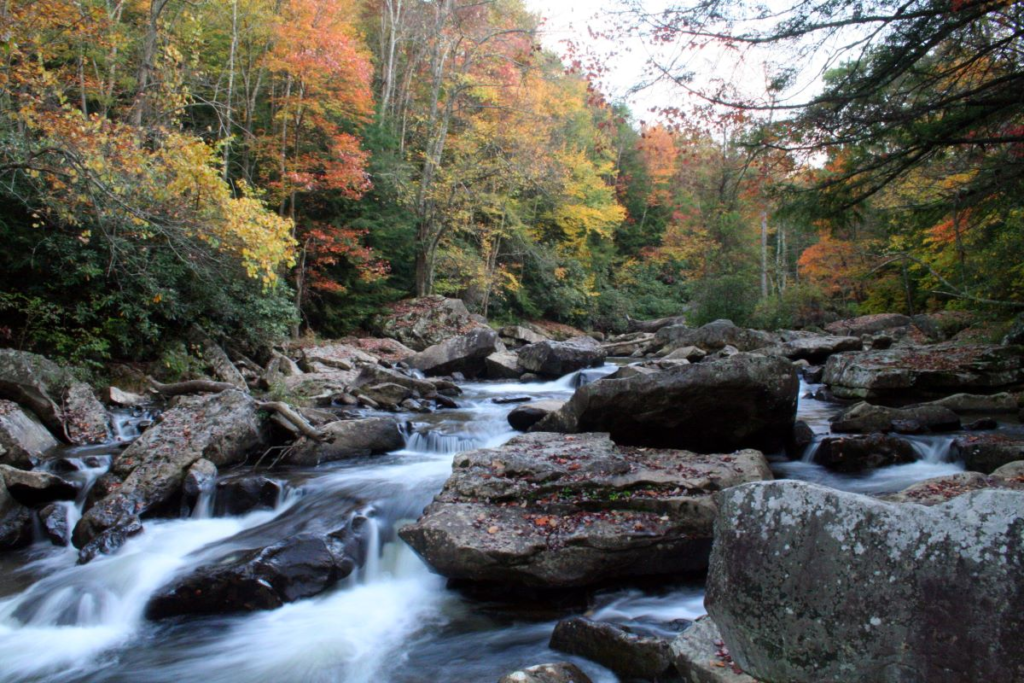
Paul the Apostle

Finally, brethren, whatsoever things are true, whatsoever things are honest,
whatsoever things are just, whatsoever things are pure, whatsoever things are lovely, whatsoever things are of good report; if there be any virtue, and if there be any praise, think on these things. (Philippians 4:8)
Henry David Thoreau
My profession is to always find God in nature.
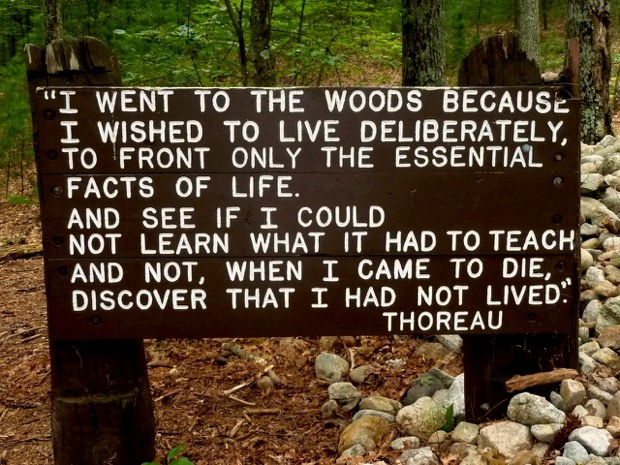
Anne Frank
The best remedy for those who are afraid, lonely or unhappy is to go outside, somewhere where they can be quiet, alone with the heavens, nature and God. Because only then does one feel that all is as it should be and that God wishes to see people happy, amidst the simple beauty of nature. I firmly believe that nature brings solace in all troubles.

Ralph Waldo Emerson
Nature is the art of God.

Mother Teresa
We need to find God, and he cannot be found in noise and restlessness. God is the friend of silence. See how nature – trees, flowers, grass – grows in silence; see the stars, the moon and the sun, how they move in silence… We need silence to be able to touch souls.

Psalms 46:10
Be still, and know that I am God.

George Washington Carver
I love to think of nature as an unlimited broadcasting station, through which God speaks to us every hour, if we only will tune in.
Reading about nature is fine, but if a person walks in the woods and listens carefully, he can learn more than what is in books, for they speak with the voice of God.

Job 37:14
Hearken unto this, O Job: stand still, and consider the wondrous works of God. (Job 37:14)
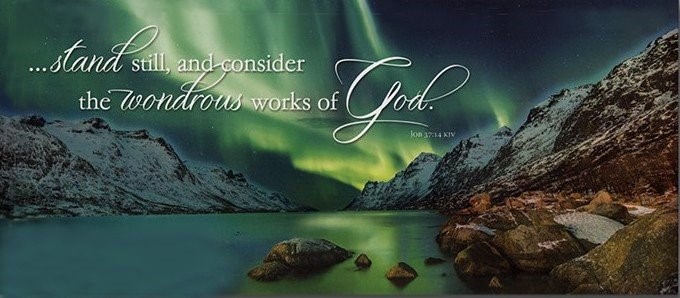
D&C 50:18-19
Yea, all things which come of the earth, in the season thereof, are made for the benefit and the use of man, both to please the eye and to gladden the heart; Yea, for food and for raiment, for taste and for smell, to strengthen the body and to enliven the soul.

Martin Luther
God writes the Gospel not in the Bible alone, but also on trees, and in the flowers and clouds and stars.

SUMMARY
A caveat: We are by no means suggesting that one look for God in nature instead of participating in more traditional religious worship. There is a reason God has established His Church on the earth. It provides us with an organized way to serve each other and to lift up those in need. It is hard to serve one’s fellow men if he is never around them.
Furthermore, through the Church we receive direction from God’s living prophet on the earth and other leaders whom He has called. With fellow believers we can partake weekly of the sacrament of the Lord’s supper and renew our covenants with Him. In classes and meetings we can be nourished by teachers and speakers. We can respond to opportunities to be the teacher or speaker ourselves from time to time.
But we are suggesting that it is not enough to be religiously active. One could spend countless hours in church and still be spiritually dead. Meetings and classes are necessary, but they may not always be the best place to feel God’s presence and receive His direction for our lives. For that, just as Jesus periodically sought time alone, so do we need to do so. Sometimes we will find that peace and inspiration in a park, a garden, a forest, on a beach, or in the mountains. Other times we may find it in the celestial room of our local temple, spending precious moments in quiet meditation. All of these have been the site of some of the greatest spiritual experiences God’s children have experienced in the past. And they will continue to be for generations yet unborn. I am personally grateful beyond words for what I have felt in them all.
